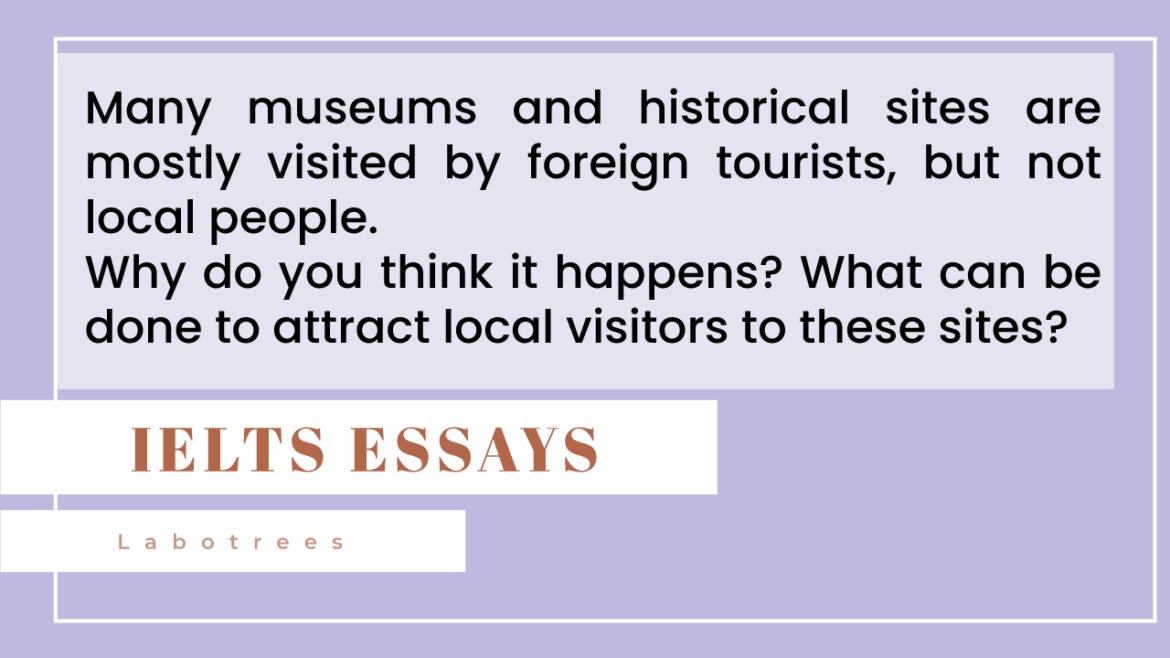Many museums and historical sites are mostly visited by foreign tourists, but not local people.
Why do you think it happens? What can be done to attract local visitors to these sites?
It is quite prevalent that museums and historical sites are mainly visited by foreigners, but local citizens do not visit that much. This essay believes that the primary reason for this phenomenon is cost and the government can attract local people by allowing them to visit free of cost.
The prominent reason why local visitors do not regularly go to historical exhibitions is because of cost. This is because many people, especially in Asian and African countries, live in extreme poverty that they have very little money for food and clothes. Therefore, these individuals do not visit their museums because they cannot afford the ticket price to enter these establishments. For instance, it has been found in a recent study by The Sunday Times that only 12% of African citizens visit their historical sites each year because the majority of people are not able to afford the cost.
The most effective method to encourage the local public to visit museums is that they should be allowed to enter these buildings free of cost. This is to say that historical buildings need money in order to maintain and run them, therefore, they charge some fees from visitors to enter these places. However, if the state can divert some funds to sponsor these sites, local people can visit them free of cost. For example, in Britain, the government allocates some part of their funds to their museums, which allows the public to visit their historical places without spending money.
In conclusion, local visitors do not visit their museums and historical places because the majority of people cannot pay the fees to enter these buildings and the government can motivate the local public by sponsoring these places so that locals can visit free of cost.

